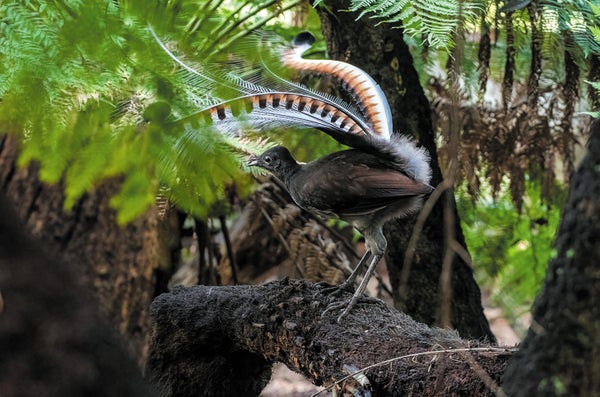Edited by Dava Sobel
This poem wanted to rhapsodize about
the love song of the superb
lyrebird (his real name), who flares
tail and struts atop his display area, a stage
On supporting science journalism
If you're enjoying this article, consider supporting our award-winning journalism by subscribing. By purchasing a subscription you are helping to ensure the future of impactful stories about the discoveries and ideas shaping our world today.
which he erects for his desired mate.
He mimics every bird (a few) of every species
(not even close) in fantastic vocalization
never before heard (true) in all of Australia
or the world—a mobbing throng of songbirds,
fricative squawks and trilling cries of panic
at the approach of a predator (frantic
wingbeats included). This poem ached
to swoon at the skill and ardor
laid at her passerine feet. But the liar
bird, it turns out, sings to deceive her
into thinking she cannot leave him because
she will be attacked instantly by a predator
(as she is), and as he mounts her, he covers
her eyes with a hood of his beating wings.
